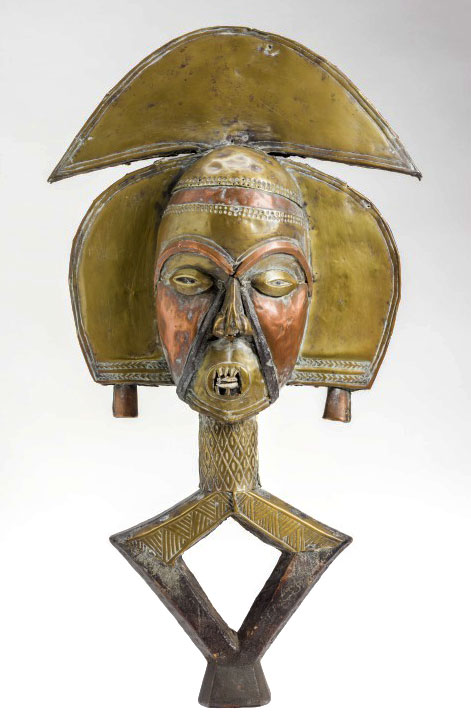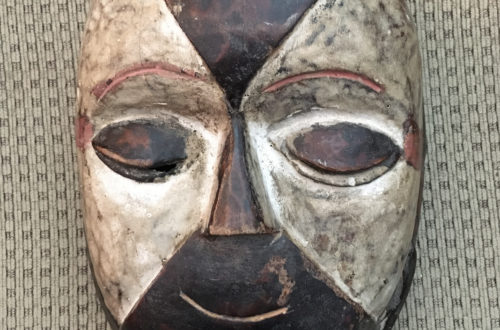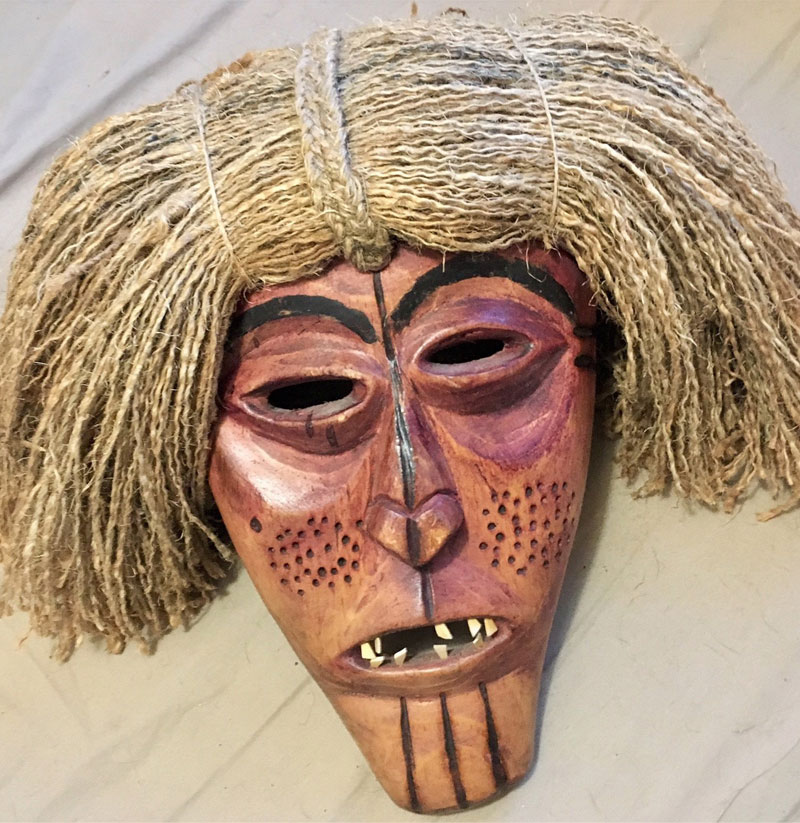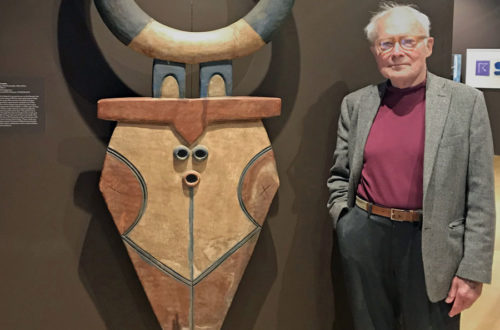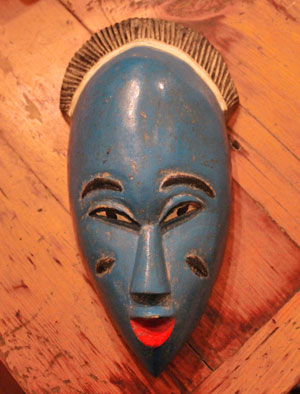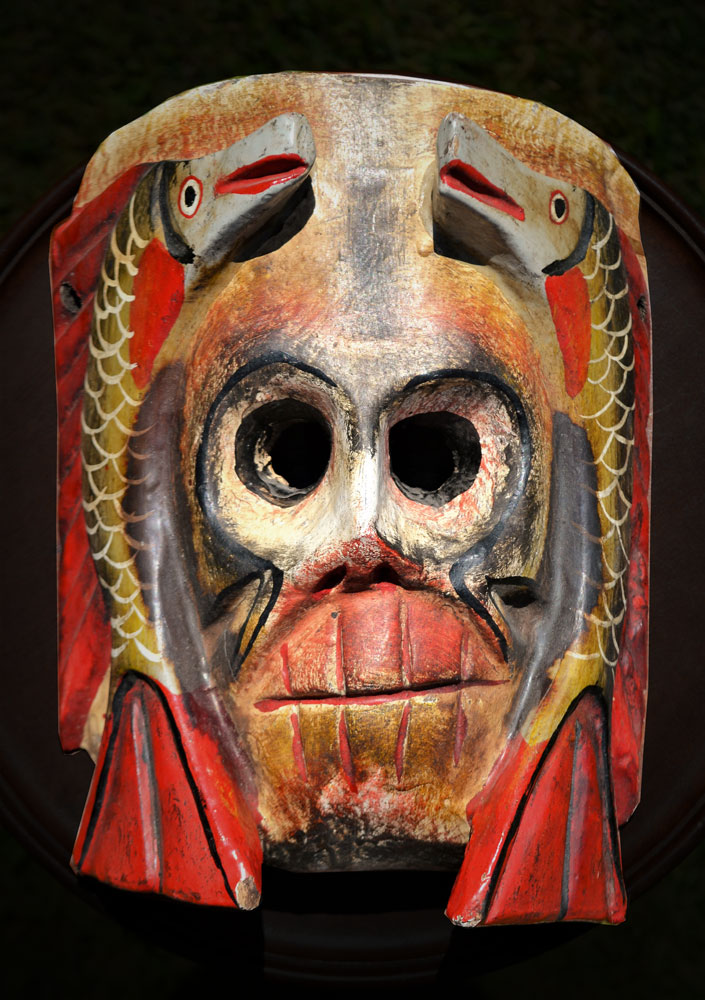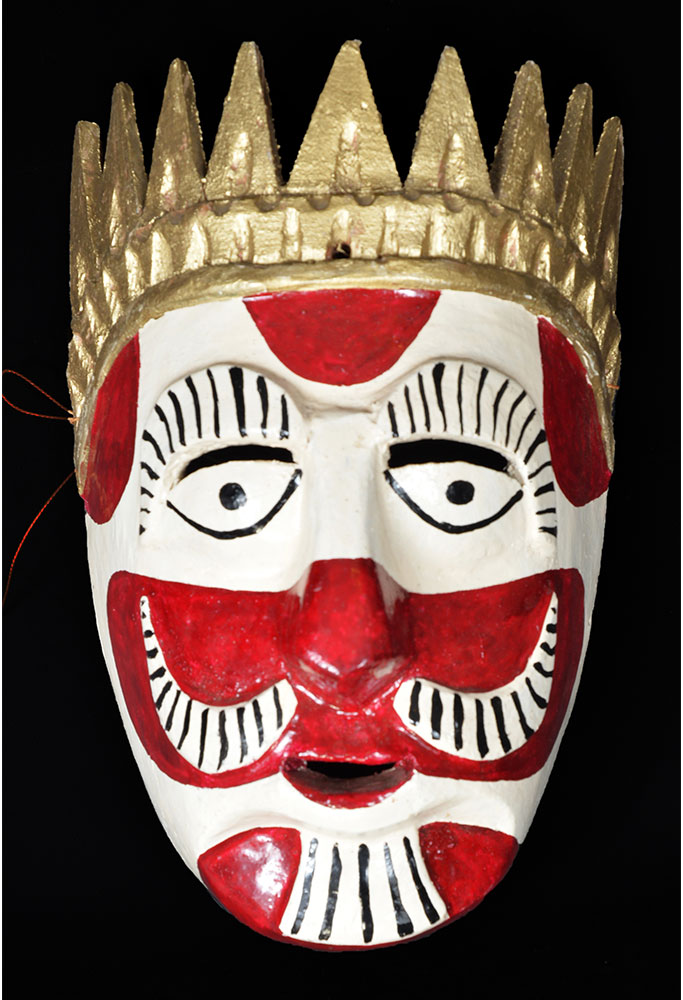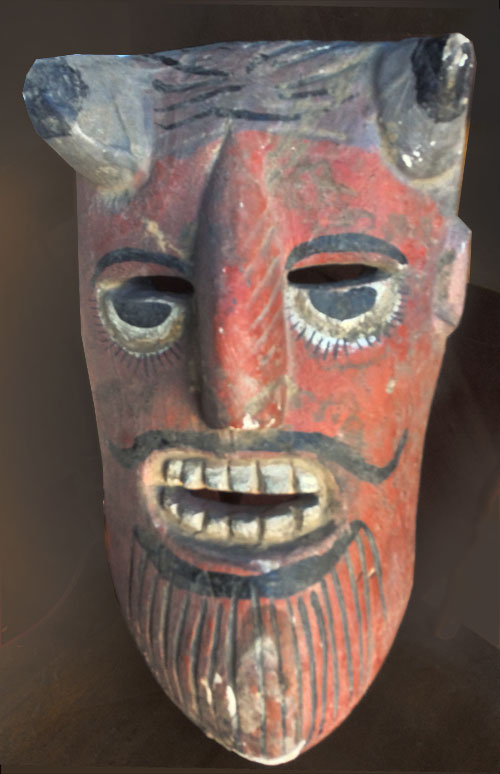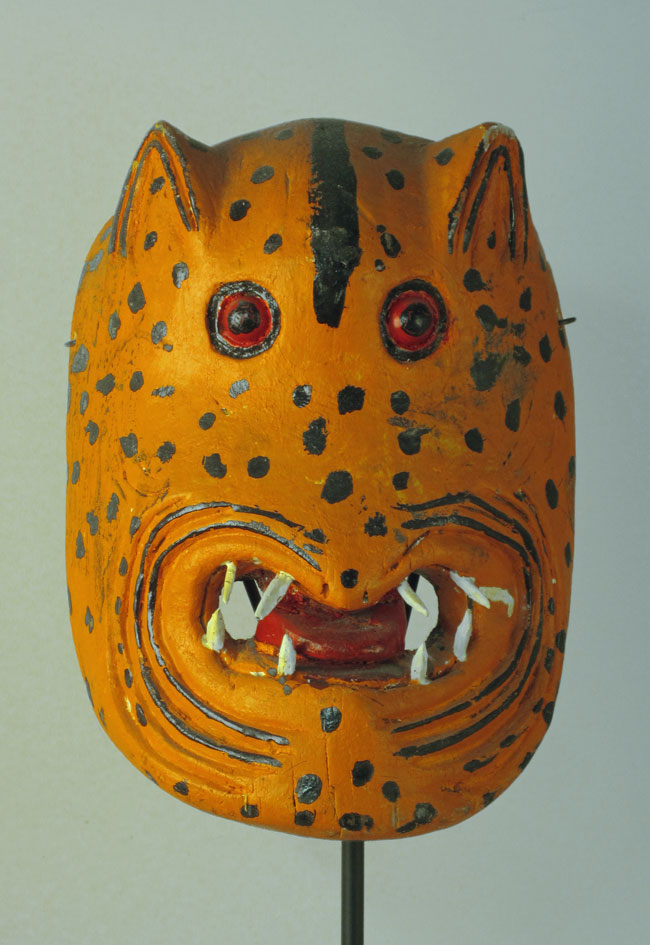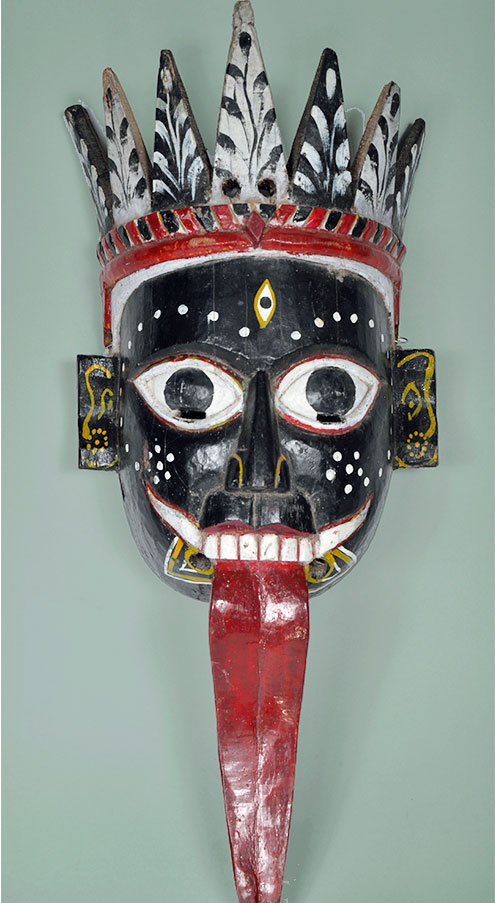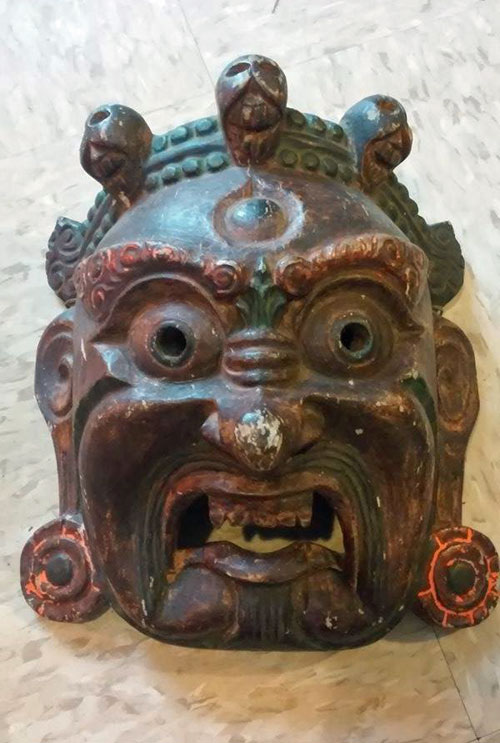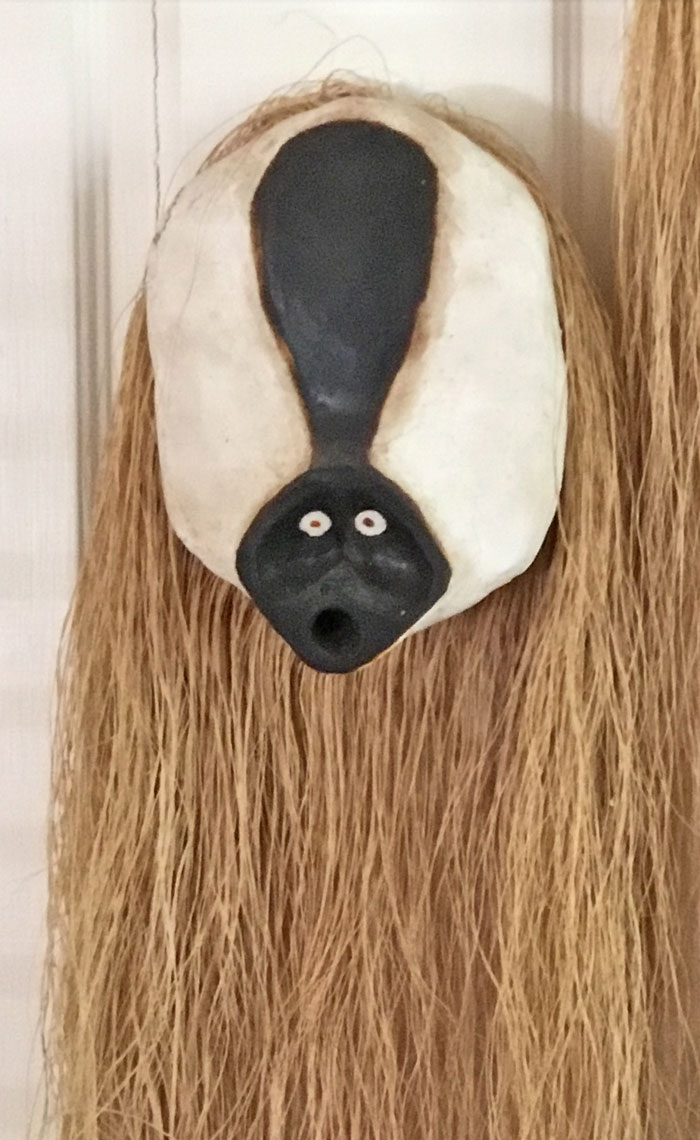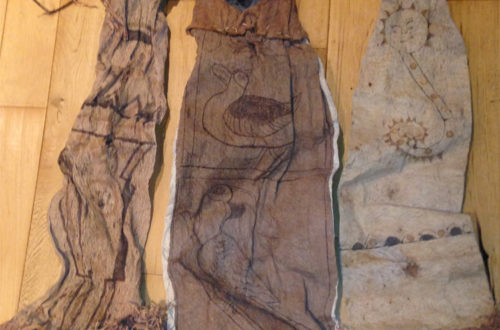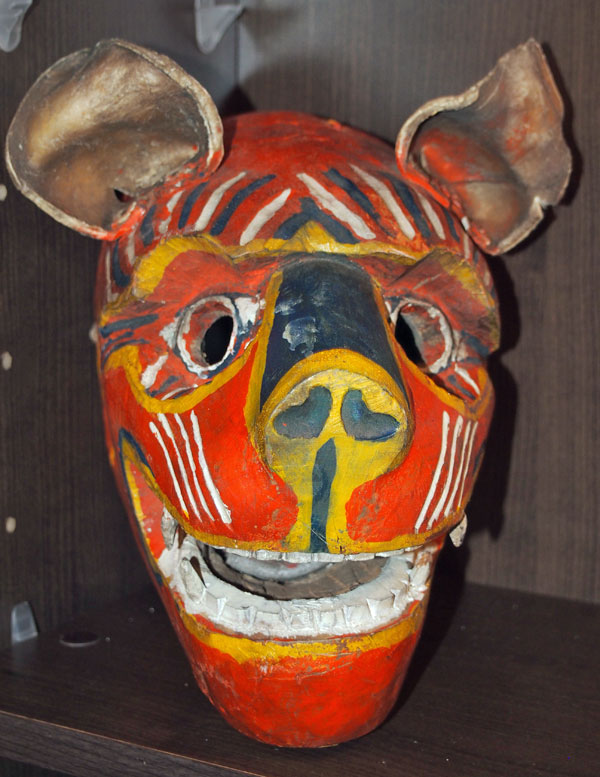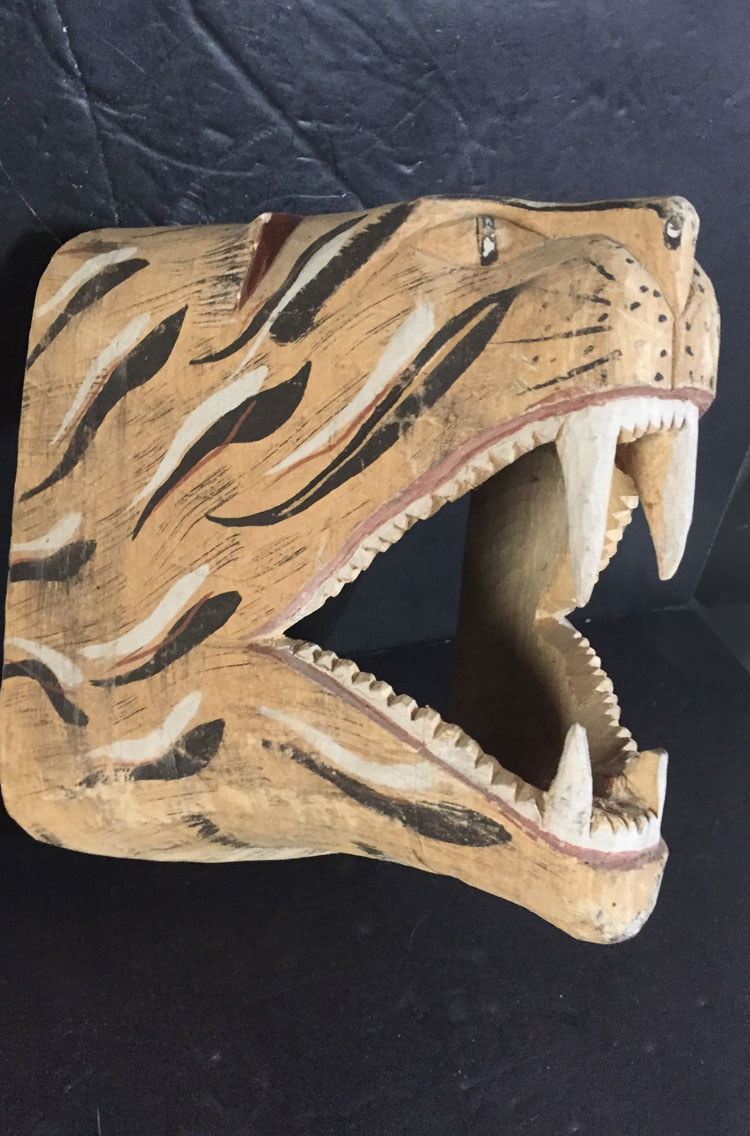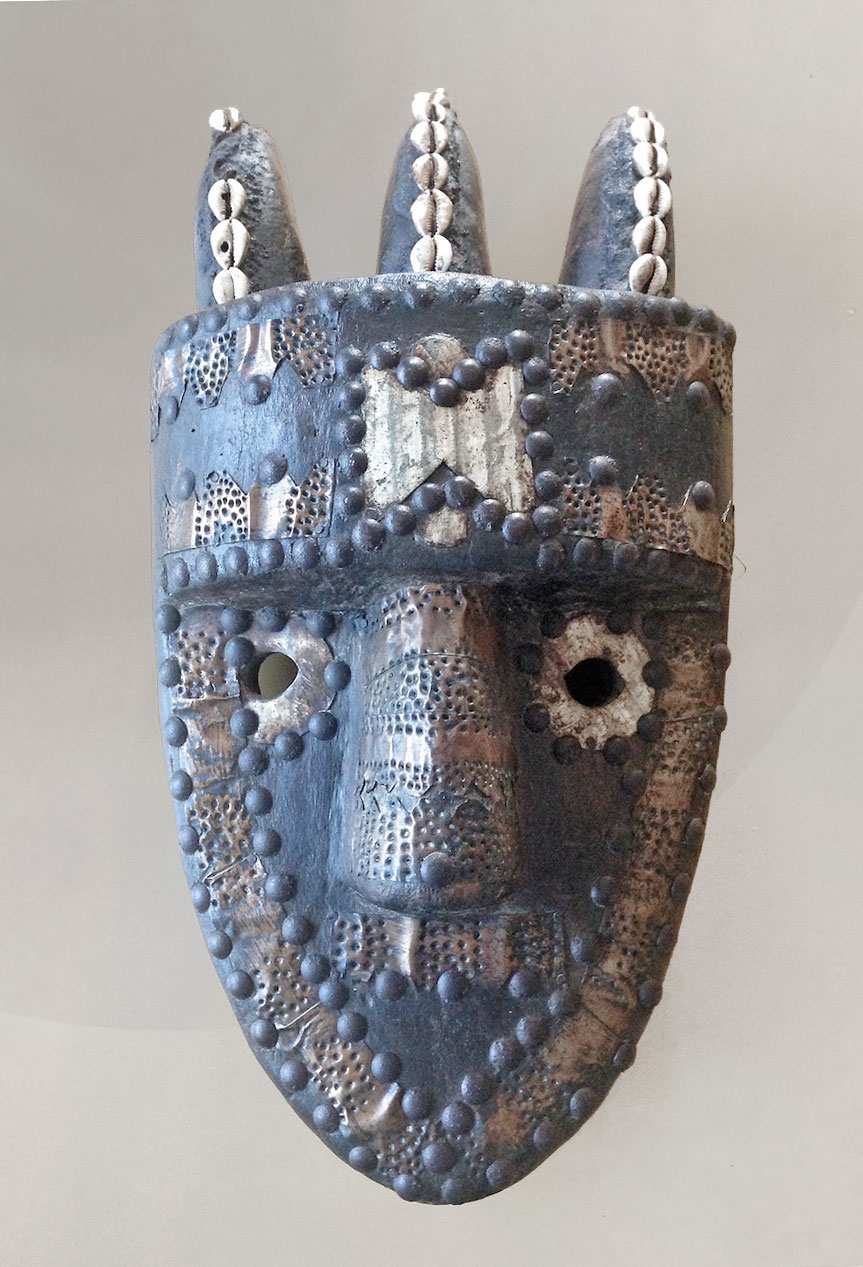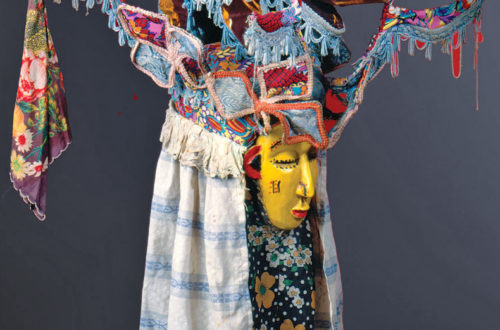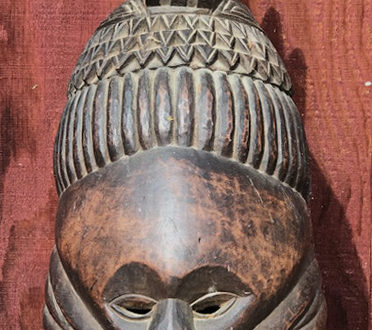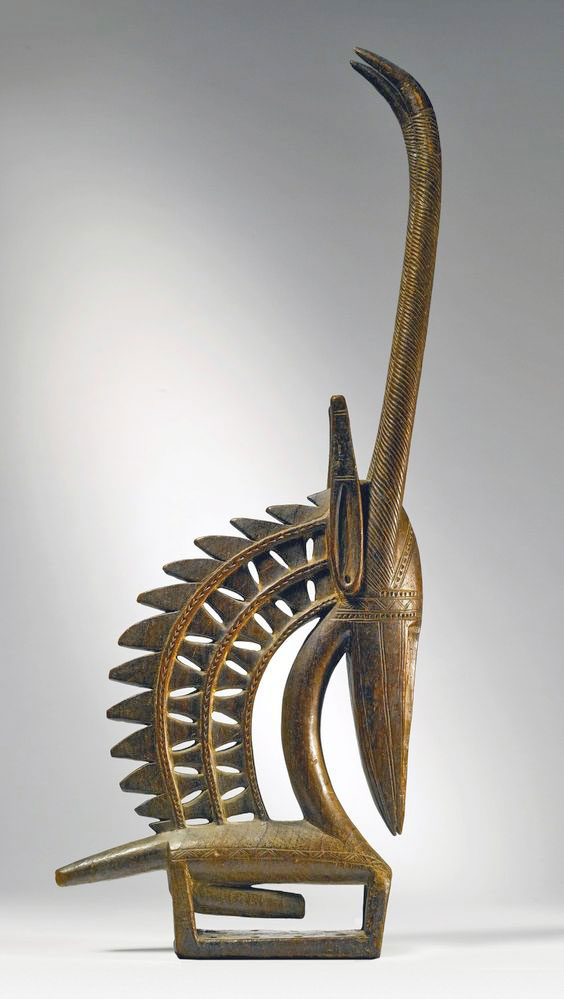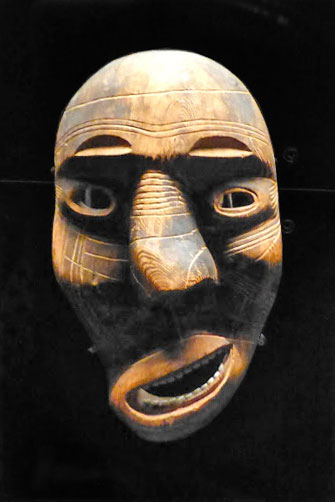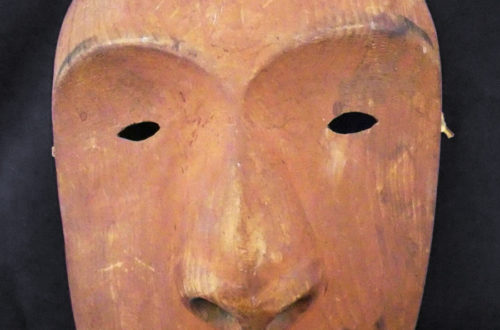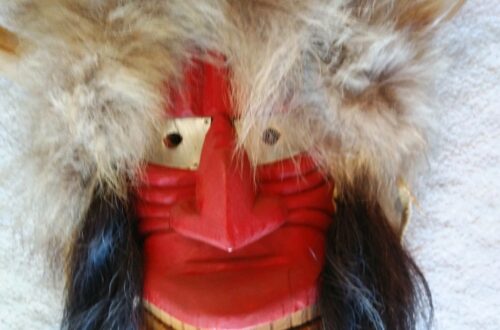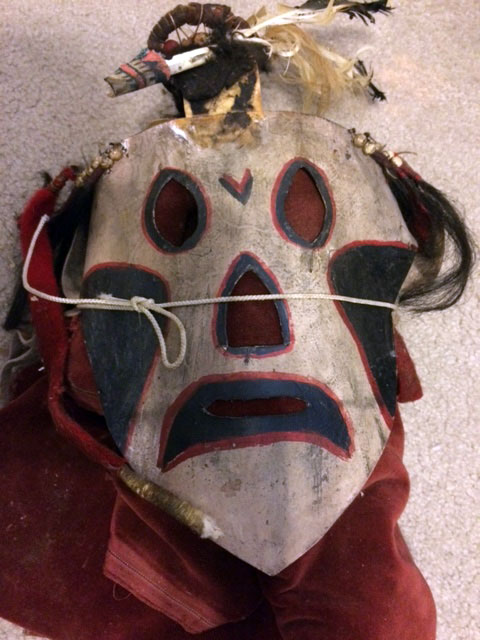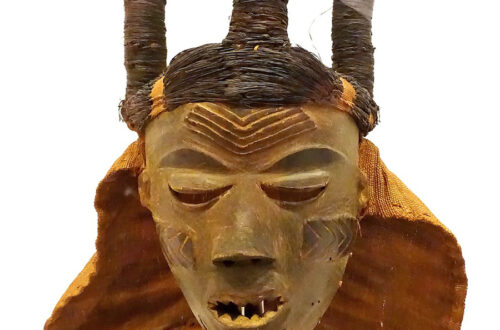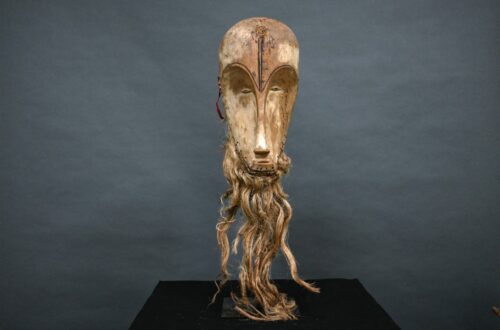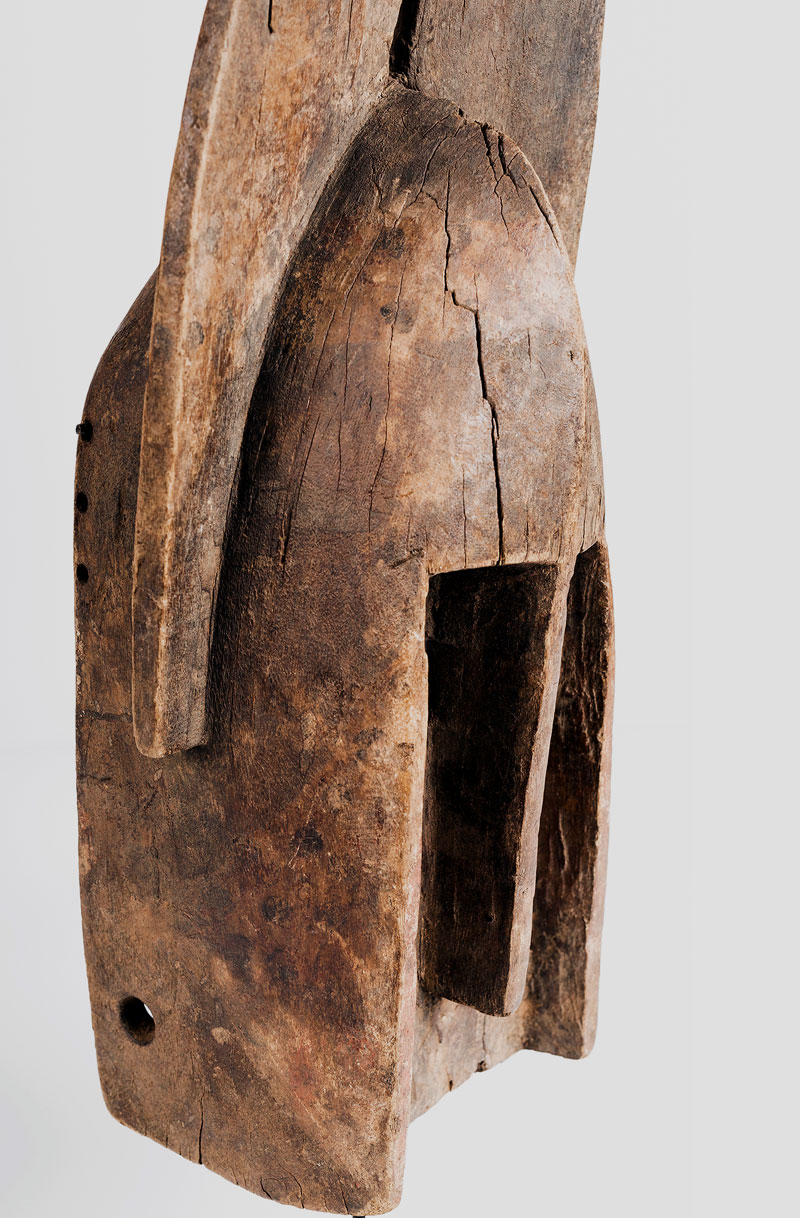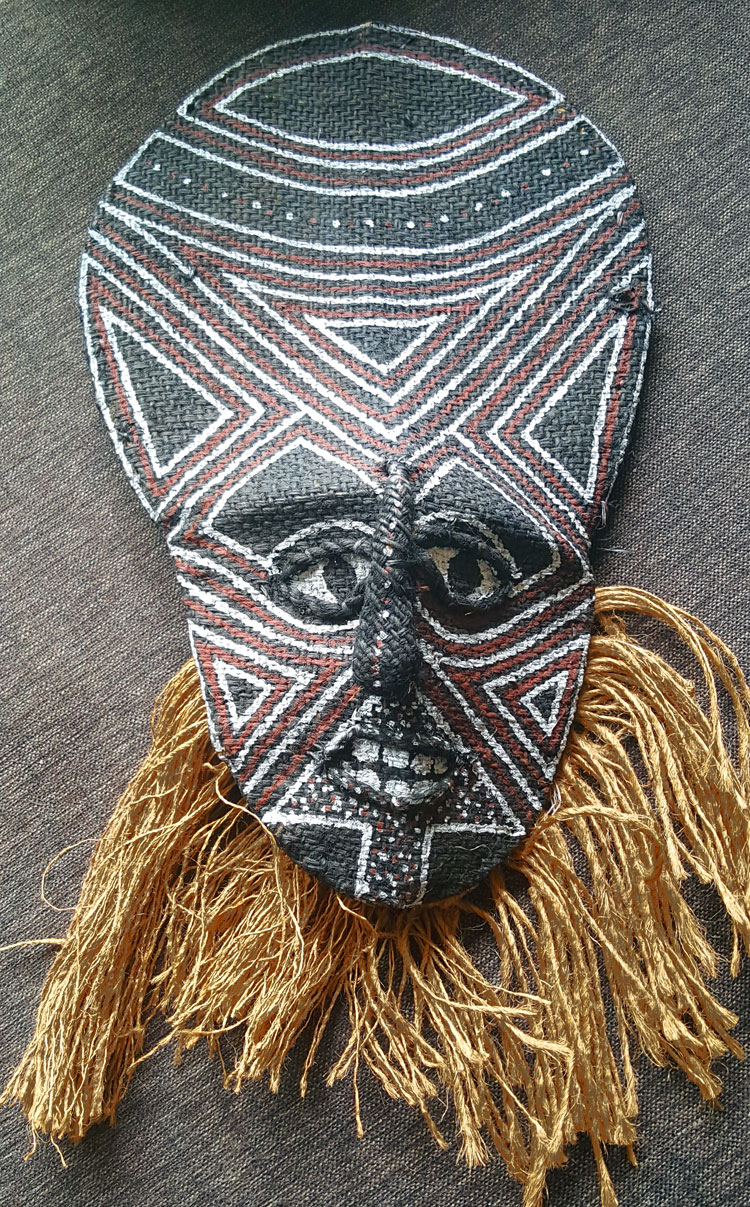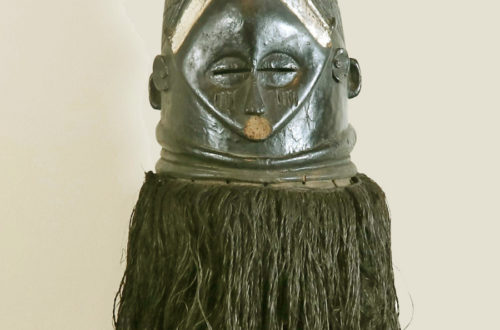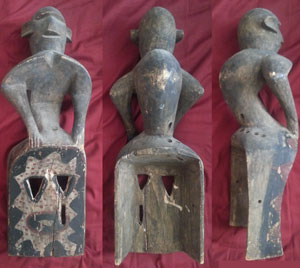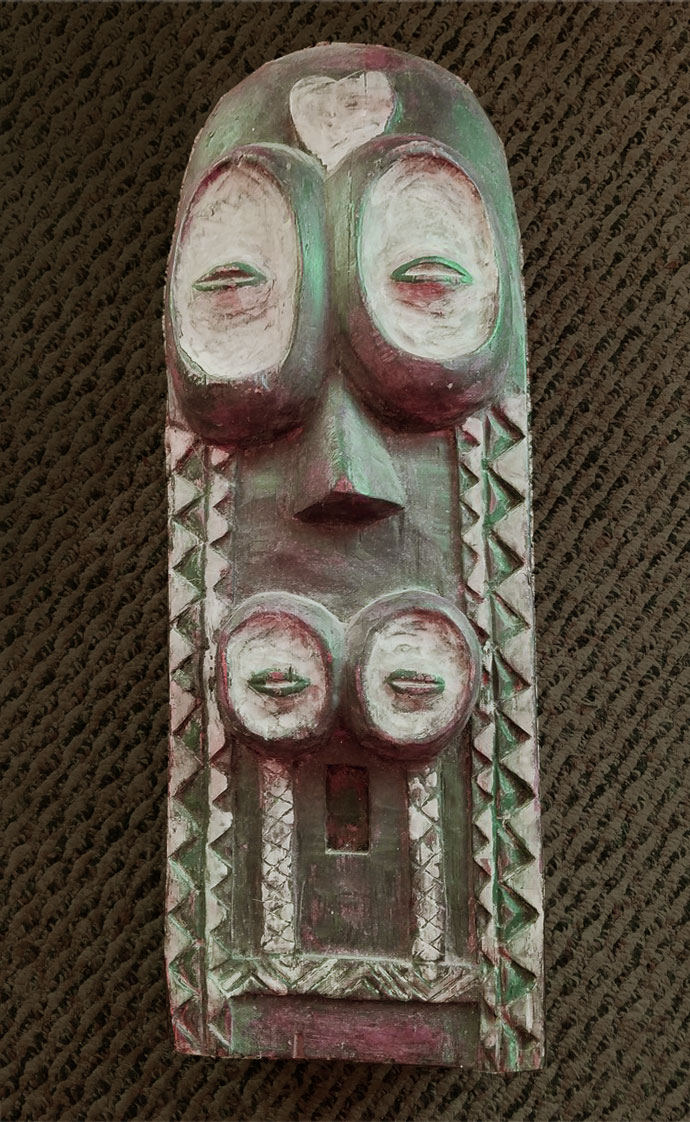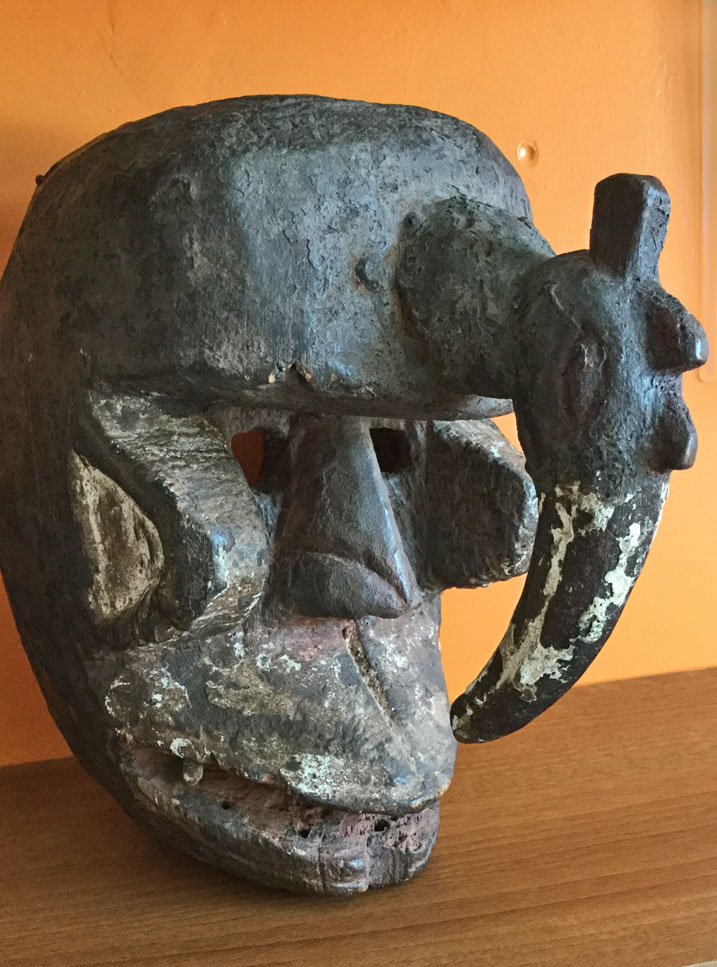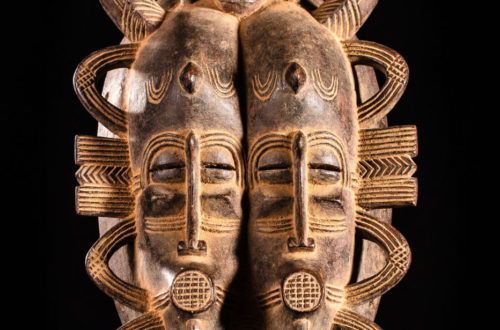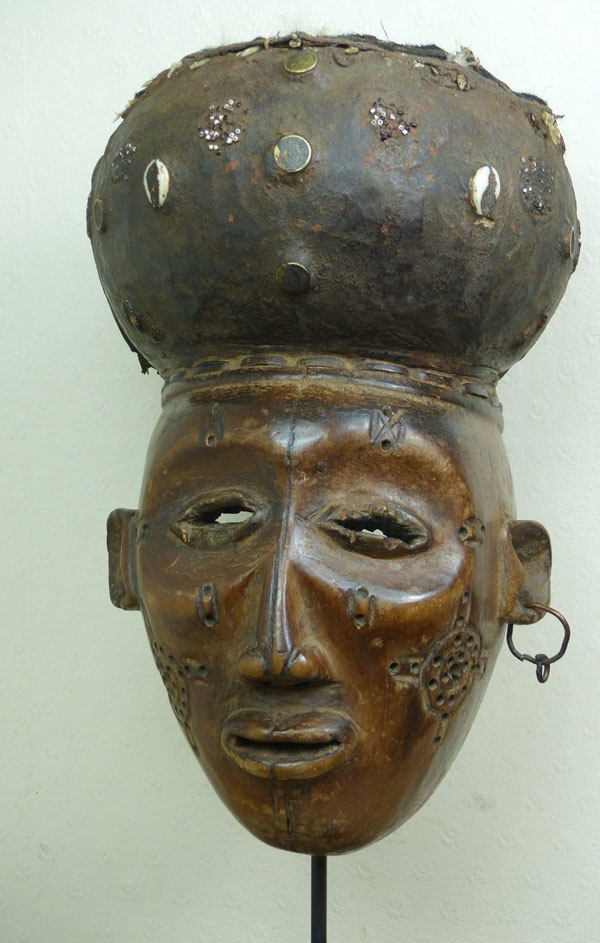Most of us call this female headdress a Nimba, but the real spelling is D’mba. When danced in a village ceremony, a tall man puts it over his shoulders and holds it by the bottom of the front legs. The neck and head show up very high off the ground. The dancers body is completely hidden by cloth and raffia. When not being danced, it can be displayed as a spirit figure. Collectors love them, but they are so big, difficult to carve and expensive to ship that we don’t see many of them in the USA. This authentic piece was sold by Sotheby’s to a museum a few years…
-
-
Modern Chokwe mask?
Q: My grandparents got this mask in Botswana on one of their hunting expeditions. They stopped traveling 25 years ago, so I know the mask is at the very least that old. They collected 100+ masks over all the years they were traveling to different countries and since they are in their 90s now they don’t have very good memories and couldn’t provide me with any more detail than the mask coming from Botswana. The face is 9 ½” long and 6 ¾” inches at its widest point. The headpiece has a diameter of 9 ¼”. Sliced wooden sticks create the foundation for the headpiece, with a burlap-type material stitched…
-
Recent Mexican decorative
Q: I recently purchased a few masks from a local auction in the south of England. I’m not a collector of masks but a collector of the unusual and beautiful. There were three in the lot. I understand you only respond to one question at a time. I believe two to be Balinese but the third I have no idea. The three masks cost me £90 with all fees included. I will contact you again about the other two later. Thank you for your time. Alex, 1179 A: This is proof that the long tradition of Mexican decoratives is alive and well. If you’re unfamiliar with Mexican masks, “decorative” is…
-
Indian mystery mask
Q: Interested in the origin of this mask and any information that would help. It is a heavy dark wood carving weighing 13 lbs, 23 x 12 x 7 1/2 inch. Barry,1178 A: It’s always nice to know when, where and how you got the mask. In your case it may not be a mask because it is so large and heavy, and it is missing eye holes and any way of holding it to the head. Maybe it is an architectural detail. Then why is the rear so carefully scooped out and stained black? I would sure like to know more about this beautifully aged piece of sculpture. Hopefully…
-
Piaroa animal mask from the Orinoco R.
Q: Can you tell me the origin of this mask and an approximate value. Actually, most came from South America, but I know little else. I live in Miami and and was given these pieces over 20 years ago, and so do not know the provenance. I can take pictures of all of them should you wish. I am downsizing my living and won’t have space to keep them displayed. Bruce, 1177 A: This mask is from the Piaroa Indians who live in the Orinoco River basin that is on the border between Colombia and Venezuela, in the Northwest part of the Amazon area. There’s also a chance that it…
-
Taking photos of your Mystery Mask
Roosje: My daughter-in-law is interested in masks. I enjoy searching for affordable art and she asked me to keep an eye open for one. I found this mask (I live in the Netherlands) in an antique store of whom the owner is retiring and selling his stock for reduced prices. I paid 40 euro for the mask. I liked it very much and thought if my daughter in law does not want it, I will keep it myself. It is now hanging on my wall 🙂 I have been searching for information and I suspect that it is a mask from the Ivory Coast, Liberia. I am curious, is it…
-
3 masks from Greenland
Masks of the World is the name of this website, so it behooves me to occasionally show masks from unusual locations. Let’s visit Greenland today. These photos were taken by Mary Payne at the Quai Branly Museum in Paris. It is famous for its important collection of ethnographic arts. Called Kiaapaatt masks, these three were collected in 1934 from somewhere in Greenland. I’m assuming the Kiaapaatt are an Inuit culture that immigrated from Canada after the 13th century. I’ve seen Inuit masks from Northern Canada that look slightly like these. Bob, 1175
-
Bamana Ntomo mask from Mali
Q: I know you have shown similar masks in the past… I’d like to know where the artist got the metal ( I assume the metal is aluminum.) I bought this mask at an estate sale many years ago and don’t remember what I paid for it. Would like your opinion on its origin and was it made for tourists? It doesn’t matter, I’m just curious. My 3 kids will have a great tag sale one of these days! Mickey, 1174 A: Ntomo (N’tomo) masks from Mali are among my favorites. I’m not alone—they are popular throughout the tourist industry. However, your bright and shiny example could easily come from…
-
Mikishi mask from the Chokwe
Q: I found this one in my uncle’s house while we where making it ready for sale. Ingrid, 1173 A: Mishiki masks are unique to the Chokwe people and they come in many different styles. That’s because this ethnic group is so large. They are spread all over southern DRC (Congo), Angola and Zambia. Size, shape and materials can vary greatly. However, the colors are usually red, white and black. The designs have complex geometric patterns on woven surfaces. They are usually oversized. Please take the time to Google “mishiki masks” to see the diversity of this unusual art form. I love them, but my enthusiasm is not shared by…
-
Bembe circumcision mask
Q: This mask is medium size, about 18″ or so. It is made from very heavy dense wood. There are a series of holes along the sides. Robert, 1172 A: The Bembe are part of the large Lega culture in the eastern Democratic Republic of Congo. Masks that look much like this one are worn by boys during their circumcision rites which go on for many days and include an exclusion period. What you see in this photo is a fairly common carving made for retail in local markets or for sale on the internet. They are made rather quickly and are rougher than what you might see in a…


